Key takeaways
- Activist teacher resources empower both teachers and students to foster critical thinking and social awareness in the classroom.
- A culture of inquiry prioritizes questions over answers, creating a safe environment for exploration and growth.
- Practical strategies include modeling curiosity, embedding inquiry in daily routines, and celebrating thoughtful questions to encourage participation.
- Utilizing digital platforms and curated resources can enhance student engagement and deepen the inquiry process.

Understanding Activist Teacher Resources
Activist teacher resources aren’t just materials; they’re catalysts for change in the classroom. When I first encountered them, I felt a surge of hope—finally, tools that aligned with my desire to challenge norms and empower students. Have you ever struggled to find content that truly sparks critical thinking and social awareness? These resources answer that call.
From my experience, activist teacher resources blend facts with narratives that question the status quo, encouraging both teachers and students to dig deeper. They aren’t about handing down answers but about nurturing curiosity and skepticism in a safe, supportive space. Isn’t that what education should be about—fostering inquiry rather than rote learning?
What strikes me most is how these resources connect activism to pedagogy in a way that feels authentic rather than forced. They invite us to engage emotionally and intellectually, making learning a dynamic, ongoing process. How often do you find teaching materials that inspire you as much as they do your students? That’s the power of activist teacher resources.
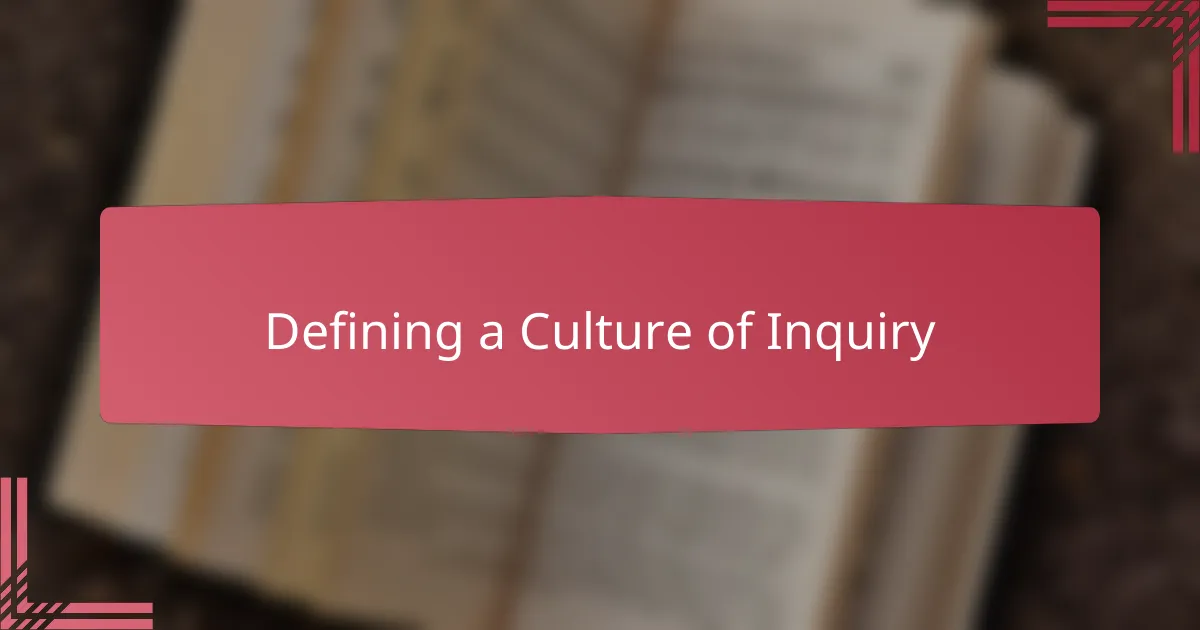
Defining a Culture of Inquiry
To me, a culture of inquiry means creating a classroom where questions matter more than answers. It’s about fostering an environment where both teachers and students feel safe to wonder, challenge, and explore without fear of being wrong. Have you ever noticed how transformative it is when a simple question opens up a whole new way of thinking?
I remember early on feeling hesitant to admit I didn’t have all the answers. But embracing inquiry shifted everything—it made learning a collaborative journey instead of a one-way lecture. Isn’t that the kind of dynamic classroom culture we all wish we had?
A culture of inquiry isn’t just about curiosity; it’s about trust. Trust that questioning leads to growth, and that every perspective adds value. When we nurture this space, we give students the courage to push boundaries and the confidence to be lifelong learners.
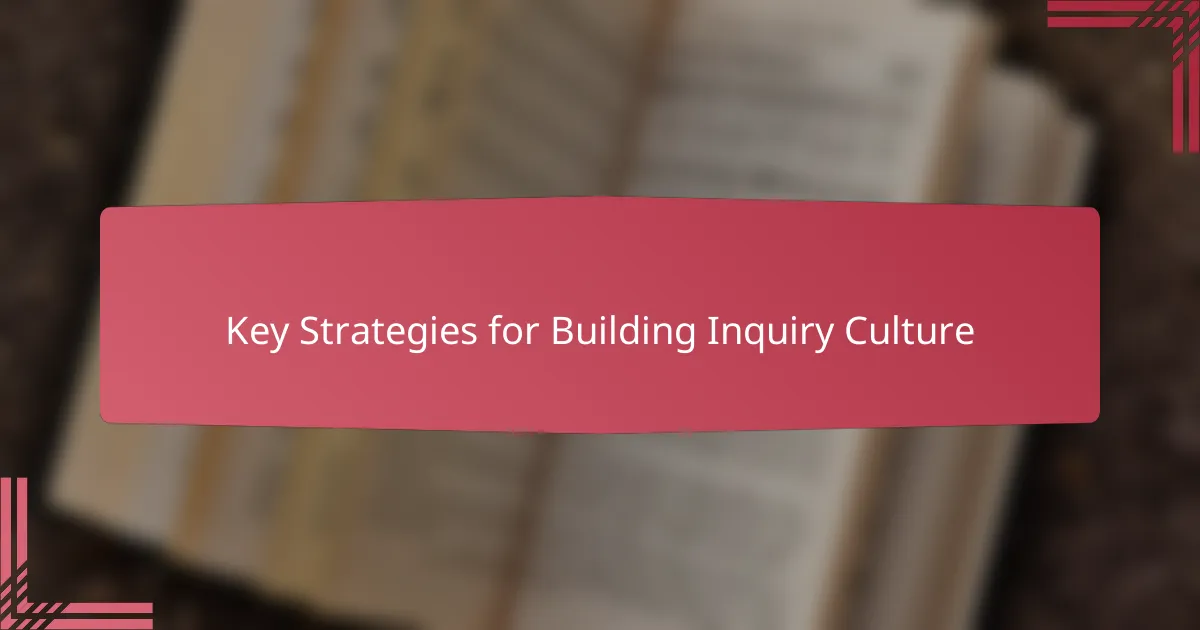
Key Strategies for Building Inquiry Culture
One strategy I found essential was modeling my own curiosity openly. When I share my questions aloud, students see that I don’t expect to have all the answers either. Doesn’t that vulnerability create a bridge, inviting everyone to participate in the inquiry?
Another key tactic was embedding inquiry into everyday routines. Instead of waiting for “big questions,” I let small moments spark exploration—like wondering why a news story frames an issue a certain way. Have you noticed how those casual moments often lead to the richest discussions?
Finally, I made it a point to celebrate questions as much as answers. Praising thoughtful questions—even the ones that seem “off-topic”—helped build a classroom where risk-taking felt safe. When students feel valued for their curiosity, how much more willing are they to dive deep into complex topics?
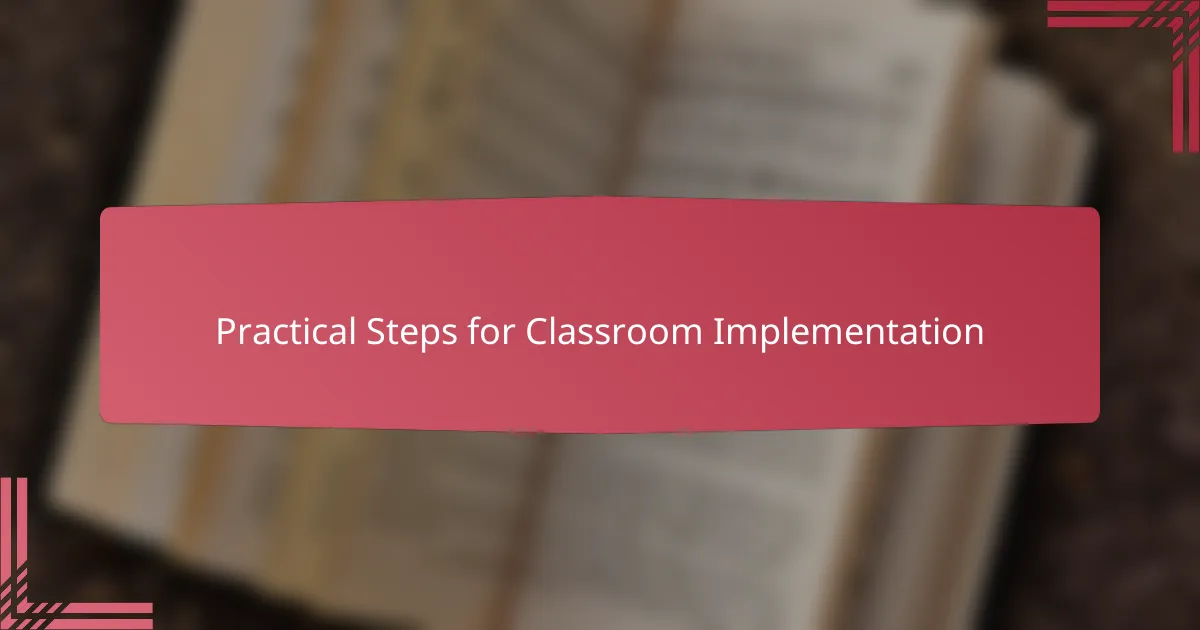
Practical Steps for Classroom Implementation
Implementing a culture of inquiry starts small for me. I pick one question each week—something open-ended that invites multiple viewpoints—and we explore it together. Have you ever noticed how even a single question, posed with genuine interest, can transform a quiet class into a buzzing community of thinkers?
I also found that creating space for reflection after discussions is crucial. Sometimes I ask students to jot down what surprised them or what doubts they still carry. This practice not only honors their thinking but signals that learning isn’t about immediate answers—it’s about ongoing curiosity. Doesn’t that make the classroom feel more like an adventure than a test?
Lastly, I make sure to lean into the unexpected. When a student’s question leads us somewhere unplanned, I follow it with enthusiasm instead of steering back to the lesson plan. It’s in those spontaneous detours that real inquiry happens. Have you ever witnessed a class moment that completely shifted your perspective? Those are the moments I treasure most.
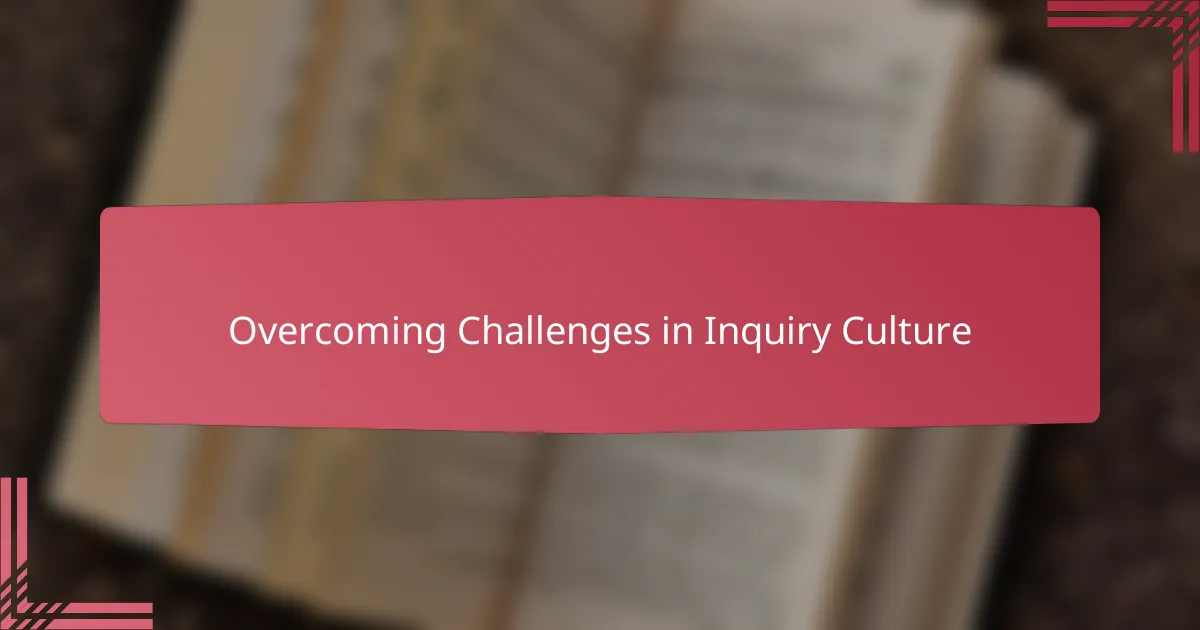
Overcoming Challenges in Inquiry Culture
Challenges in fostering a culture of inquiry often arise when students—and sometimes even colleagues—resist shifting from passive learning to active questioning. I remember early on feeling frustrated when silence filled the room after I posed a provocative question. Have you ever faced that deafening quiet? It took patience and persistence to help students feel comfortable enough to take risks and voice their doubts.
Another obstacle is balancing curriculum demands with the freedom inquiry requires. At times, I felt squeezed by deadlines and standardized tests, wondering if genuine inquiry could survive under such constraints. Yet, I discovered that integrating small moments of curiosity into lesson plans—like a quick question or a reflective pause—helped maintain inquiry without sacrificing content. Isn’t it amazing how tiny shifts can unlock big changes?
Finally, I had to confront my own discomfort with uncertainty. Embracing questions without immediate answers felt unsettling at first. But I learned that modeling this vulnerability invited students to embrace complexity rather than fear it. What if embracing not knowing is the real key to creating an inquiry culture? That mindset shift changed everything for me.

Examples from My Experience
Early in my teaching career, I recall a moment when a student asked a question that completely derailed my planned lesson. At first, I panicked—had I lost control? But as we explored that question together, I realized it opened a richer conversation than I had anticipated. Have you ever had a moment like that, where spontaneous inquiry led to unexpected learning? Those moments made me cherish the unpredictability that inquiry brings.
Another example comes from when I introduced a “wonder wall” in the classroom—a space where students could anonymously post questions anytime. I was amazed at how quickly the wall filled, with questions ranging from local issues to global concerns. What struck me was the way this simple tool nurtured a sense of ownership and trust; students felt safe to ask anything without fear of judgment. In my experience, creating physical spaces for curiosity can be just as powerful as the questions themselves.
I also remember partnering with a colleague to co-facilitate student-led research projects. At first, we worried that relinquishing control might lead to chaos, but instead, it fostered remarkable engagement. Watching students wrestle with complex social issues and draw their own conclusions was inspiring. Isn’t it incredible how shifting the role of teacher from authority to collaborator transforms the classroom dynamic? That experience reinforced for me that inquiry thrives best when students and teachers learn side by side.
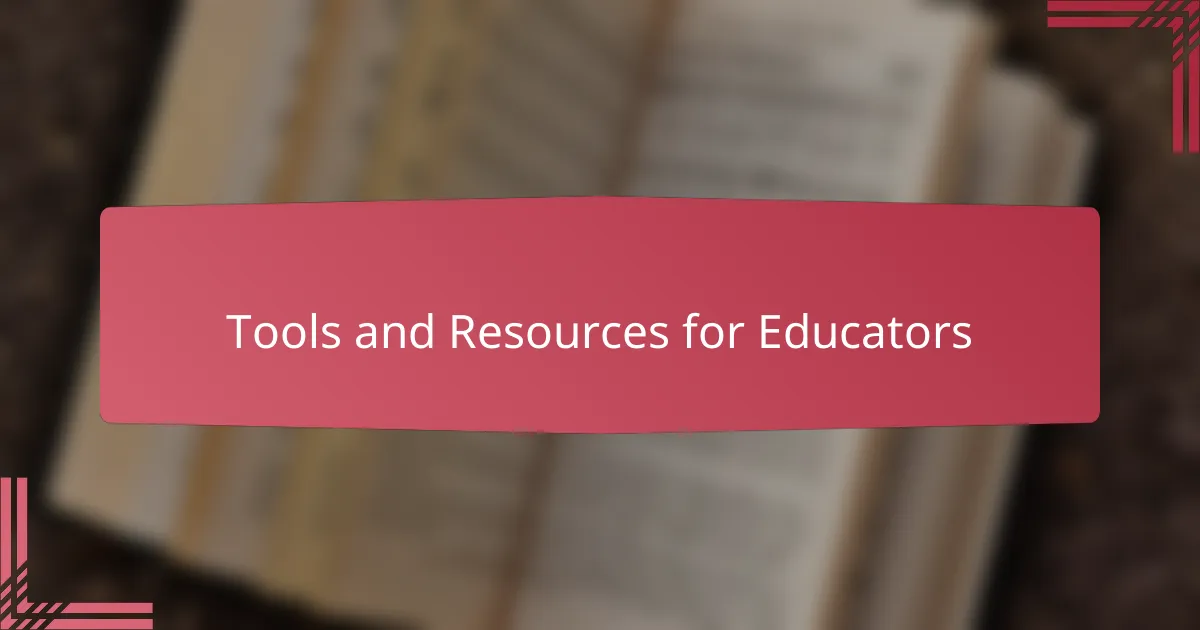
Tools and Resources for Educators
One of the most transformative tools I found for building a culture of inquiry was digital platforms that allow collaborative questioning, like Padlet or Flipgrid. Having students post and respond to each other’s questions asynchronously created an ongoing dialogue that extended beyond class time. Have you ever noticed how giving students multiple ways to engage can deepen their investment in inquiry?
I also relied heavily on curated resource collections that challenge dominant narratives—articles, videos, and podcasts that don’t just present information but invite critique. These materials became springboards for rich classroom discussions, pushing both me and my students to reconsider what we thought we knew. What resources have prompted you to rethink a subject from a fresh perspective?
Finally, creating simple, low-tech tools like question journals or “wonder boxes” proved invaluable. Inviting students to record their evolving questions and reflections gave their curiosity a tangible home. Over time, I watched those journals become personal maps of their intellectual journeys—proof that inquiry isn’t just a strategy; it’s a lived experience. Have you tried using such everyday tools to nurture sustained curiosity?